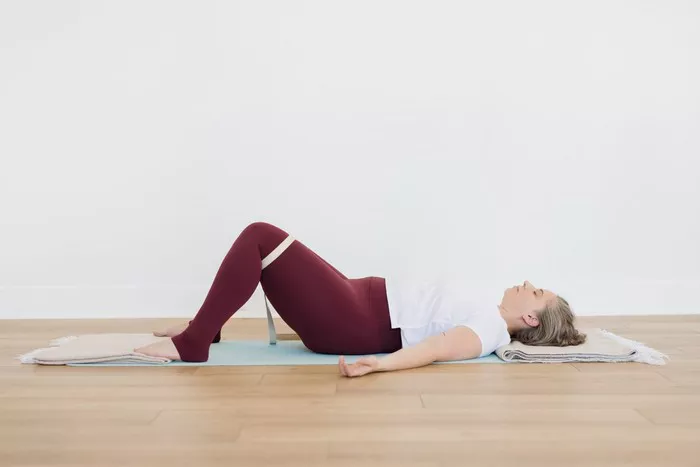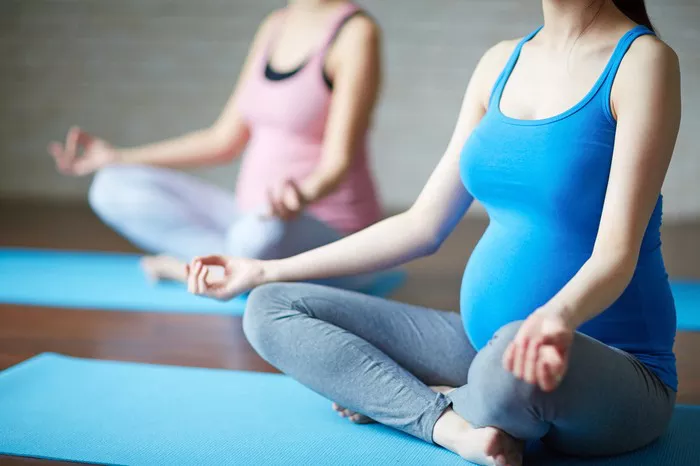Restorative yoga is a gentle, calming practice designed to help the body relax deeply. Unlike more dynamic forms of yoga, restorative yoga involves holding poses for extended periods, often supported by props like blankets, bolsters, and blocks. This allows the body to release tension and stress, promoting overall well-being and balance.
The heart chakra, or Anahata, is the fourth chakra in the traditional seven-chakra system. Located at the center of the chest, it is associated with love, compassion, and emotional balance. When the heart chakra is open and balanced, we can experience deep connections with others and ourselves. However, when it is blocked or out of balance, we may feel isolated, lonely, and emotionally unstable.
Combining restorative yoga with heart chakra work can be incredibly powerful. This practice can help release emotional blockages, promote self-love, and foster a greater sense of connection with others. In this article, we’ll explore the benefits of restorative yoga for the heart chakra, specific poses that target this energy center, and how to create a personal practice to nurture your heart chakra.
The Importance of the Heart Chakra
Understanding the Heart Chakra
The heart chakra is the bridge between the lower physical chakras and the higher spiritual chakras. It is symbolized by a green, twelve-petaled lotus and is associated with the element of air. The heart chakra governs our ability to love, show compassion, and form healthy relationships. It is also connected to our sense of peace, balance, and emotional well-being.
Signs of a Balanced Heart Chakra
When the heart chakra is balanced, we experience:
- Emotional stability: A balanced heart chakra allows us to process emotions healthily and maintain emotional equilibrium.
- Compassion and empathy: We can understand and share the feelings of others, fostering deep, meaningful relationships.
- Self-love and acceptance: A healthy heart chakra enables us to love and accept ourselves fully, which is crucial for overall well-being.
- Forgiveness: We can forgive ourselves and others, letting go of past hurts and moving forward with a light heart.
- Inner peace: A balanced heart chakra brings a sense of calm and tranquility, regardless of external circumstances.
Signs of a Blocked or Unbalanced Heart Chakra
When the heart chakra is blocked or out of balance, we may experience:
- Emotional instability: Frequent mood swings, feelings of anxiety, and depression can indicate an unbalanced heart chakra.
- Isolation: Difficulty in forming or maintaining relationships and feelings of loneliness can be signs of a blocked heart chakra.
- Lack of empathy: Struggling to understand or connect with others’ emotions can result from an imbalance in the heart chakra.
- Self-criticism: Harsh self-judgment and low self-esteem are often linked to a blocked heart chakra.
- Inability to forgive: Holding onto grudges and past hurts can indicate a heart chakra imbalance.
See Also: 30 Minutes Restorative Yoga
Benefits of Restorative Yoga for the Heart Chakra
Physical Benefits
Restorative yoga poses are designed to open the chest, shoulders, and upper back, areas commonly associated with the heart chakra. These poses can help:
- Improve posture: By opening the chest and shoulders, restorative yoga can counteract the effects of poor posture and sedentary lifestyles.
- Release tension: Holding poses for extended periods allows muscles to relax deeply, releasing tension and stress from the body.
- Enhance breath capacity: Chest-opening poses can improve lung function and breath capacity, promoting a deeper, more relaxed breathing pattern.
Emotional Benefits
Restorative yoga provides a safe space for emotional healing, helping to:
- Reduce stress and anxiety: The calming nature of restorative yoga can help lower cortisol levels, reducing stress and anxiety.
- Promote emotional release: Gentle, supported poses can facilitate the release of stored emotions, leading to emotional healing and balance.
- Foster self-compassion: The slow, mindful nature of restorative yoga encourages self-compassion and self-care, promoting a deeper sense of self-love.
Energetic Benefits
On an energetic level, restorative yoga can help balance and open the heart chakra by:
- Activating the heart center: Specific poses target the heart chakra, encouraging the flow of energy in this area.
- Balancing the energy body: By promoting relaxation and reducing stress, restorative yoga helps balance the entire energy system, supporting overall well-being.
Restorative Yoga Poses for the Heart Chakra
Setting Up Your Practice
Before diving into specific poses, it’s essential to create a comfortable and supportive environment for your restorative yoga practice. Here are some tips:
- Choose a quiet space: Find a peaceful, quiet space where you won’t be disturbed.
- Gather your props: Have blankets, bolsters, blocks, and pillows on hand to support your poses.
- Set the mood: Dim the lights, play soft music, or light candles to create a calming atmosphere.
- Wear comfortable clothing: Choose loose, comfortable clothing that allows for easy movement and relaxation.
Heart Chakra-Opening Poses
Here are some restorative yoga poses that specifically target the heart chakra:
1. Supported Fish Pose (Matsyasana Variation)
Supported Fish Pose is a gentle heart opener that stretches the chest, shoulders, and throat.
How to Perform:
- Place a bolster or rolled-up blanket lengthwise on your mat.
- Sit in front of the bolster, with your knees bent and feet flat on the floor.
- Slowly recline back onto the bolster, allowing your head and shoulders to rest comfortably.
- Extend your legs out straight or keep them bent, whichever is more comfortable.
- Relax your arms by your sides, palms facing up.
- Close your eyes and breathe deeply, staying in the pose for 5-10 minutes.
2. Supported Bridge Pose (Setu Bandhasana Variation)
Supported Bridge Pose gently opens the chest and heart area while providing support for the lower back.
How to Perform:
- Lie on your back with your knees bent and feet flat on the floor, hip-width apart.
- Place a block or bolster under your sacrum (the flat part of your lower back).
- Allow your arms to rest by your sides, palms facing up.
- Close your eyes and take slow, deep breaths, staying in the pose for 5-10 minutes.
3. Reclined Bound Angle Pose (Supta Baddha Konasana)
Reclined Bound Angle Pose opens the chest and hips, promoting relaxation and emotional release.
How to Perform:
- Lie on your back and bring the soles of your feet together, allowing your knees to fall open to the sides.
- Place a bolster or rolled-up blanket under your spine for support.
- Rest your arms by your sides, palms facing up.
- Close your eyes and breathe deeply, staying in the pose for 5-10 minutes.
4. Child’s Pose with Heart Opener (Anahatasana Variation)
This variation of Child’s Pose stretches the chest and shoulders, gently opening the heart chakra.
How to Perform:
- Begin on your hands and knees in a tabletop position.
- Walk your hands forward, lowering your chest towards the mat while keeping your hips over your knees.
- Rest your forehead on the mat or a block.
- Relax your arms and shoulders, taking slow, deep breaths.
- Stay in the pose for 5-10 minutes.
5. Supported Savasana (Corpse Pose)
Supported Savasana allows for deep relaxation and integration of the heart chakra-opening practice.
How to Perform:
- Lie on your back with a bolster or rolled-up blanket under your knees.
- Place a folded blanket under your head for support.
- Allow your arms to rest by your sides, palms facing up.
- Close your eyes and focus on your breath, staying in the pose for 10-15 minutes.
Creating a Personal Practice
Setting an Intention
Before beginning your restorative yoga practice, take a moment to set an intention. This could be a specific goal, such as opening your heart to love and compassion, or a general intention to promote relaxation and balance. Setting an intention helps to focus your practice and align your energy with your desired outcome.
Incorporating Meditation and Breathwork
In addition to the physical poses, incorporating meditation and breathwork can enhance the benefits of your restorative yoga practice. Here are some techniques to consider:
Heart Chakra Meditation
- Find a comfortable seated position, either on a cushion or a chair.
- Close your eyes and take a few deep breaths, grounding yourself in the present moment.
- Visualize a green light at the center of your chest, growing brighter and more radiant with each breath.
- Imagine this light expanding, filling your entire chest and radiating outwards.
- Repeat a heart chakra affirmation, such as “I am open to giving and receiving love,” silently or out loud.
- Continue this meditation for 5-10 minutes, then slowly open your eyes and return to your surroundings.
Heart-Opening Breathwork (Pranayama)
- Find a comfortable seated position and close your eyes.
- Place one hand on your heart and the other on your belly.
- Take a deep breath in through your nose, feeling your chest and belly expand.
- Exhale slowly through your mouth, feeling your chest and belly contract.
- Continue this deep, mindful breathing for 5-10 minutes, focusing on the sensation of the breath moving through your chest and heart area.
Creating a Consistent Practice
Consistency is key to experiencing the full benefits of restorative yoga for the heart chakra. Here are some tips for creating a regular practice:
- Schedule your practice: Set aside a specific time each day or week for your restorative yoga practice. Consistency helps establish a routine and makes it easier to stick with your practice.
- Start small: If you’re new to restorative yoga, start with shorter sessions (10-15 minutes) and gradually increase the duration as you become more comfortable.
- Listen to your body: Pay attention to how your body feels and adjust your practice accordingly. If a pose feels uncomfortable or painful, modify it or try a different pose.
- Be patient: Balancing the heart chakra and experiencing the benefits of restorative yoga takes time. Be patient with yourself and trust the process.
Conclusion
Restorative yoga for the heart chakra is a powerful practice that can promote physical, emotional, and energetic healing. By incorporating gentle, supportive poses, meditation, and breathwork into your routine, you can open and balance your heart chakra, fostering love, compassion, and inner peace. Whether you’re new to yoga or an experienced practitioner, restorative yoga offers a gentle and accessible way to nurture your heart chakra and enhance your overall well-being. So, unroll your mat, gather your props, and embark on a journey of self-love and healing with restorative yoga for the heart chakra.
Related topics:
























